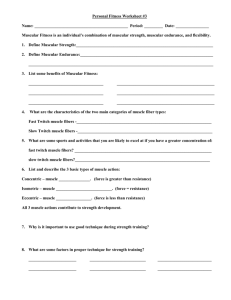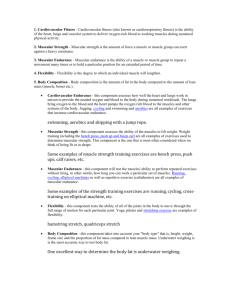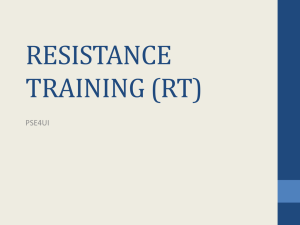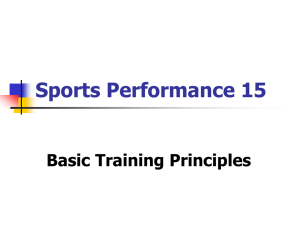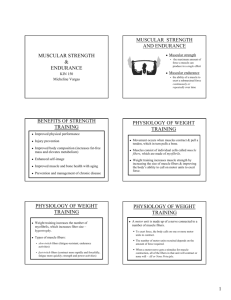Muscular System: Strength, Endurance, and Muscle Fibers
advertisement
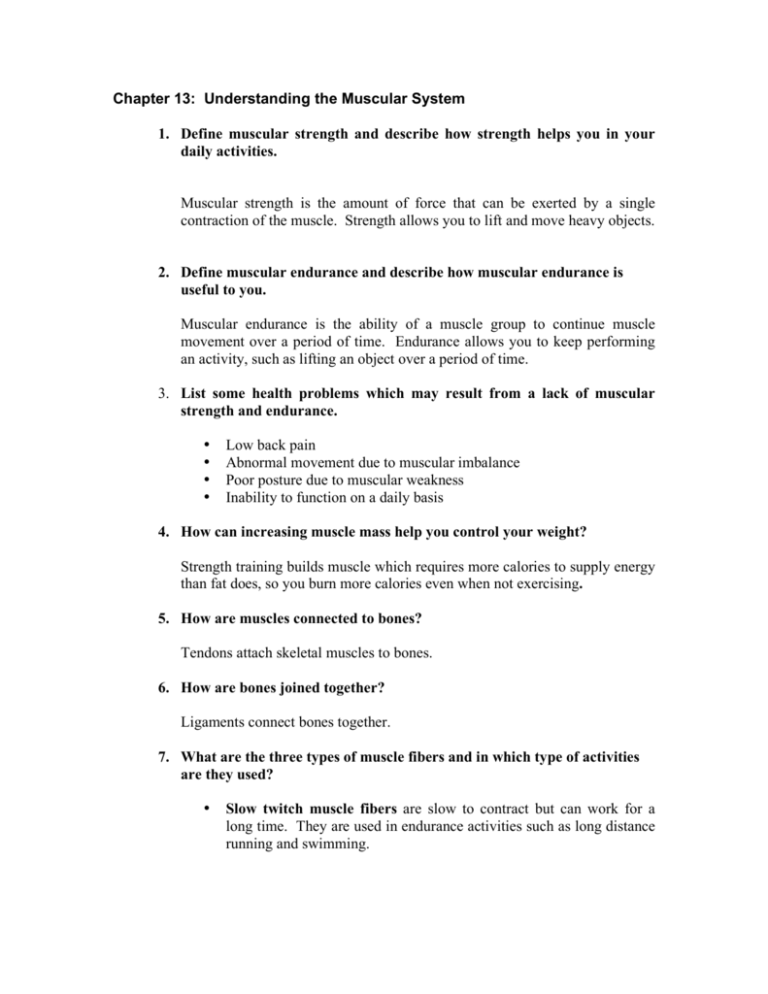
Chapter 13: Understanding the Muscular System 1. Define muscular strength and describe how strength helps you in your daily activities. Muscular strength is the amount of force that can be exerted by a single contraction of the muscle. Strength allows you to lift and move heavy objects. 2. Define muscular endurance and describe how muscular endurance is useful to you. Muscular endurance is the ability of a muscle group to continue muscle movement over a period of time. Endurance allows you to keep performing an activity, such as lifting an object over a period of time. 3. List some health problems which may result from a lack of muscular strength and endurance. • • • • Low back pain Abnormal movement due to muscular imbalance Poor posture due to muscular weakness Inability to function on a daily basis 4. How can increasing muscle mass help you control your weight? Strength training builds muscle which requires more calories to supply energy than fat does, so you burn more calories even when not exercising. 5. How are muscles connected to bones? Tendons attach skeletal muscles to bones. 6. How are bones joined together? Ligaments connect bones together. 7. What are the three types of muscle fibers and in which type of activities are they used? • Slow twitch muscle fibers are slow to contract but can work for a long time. They are used in endurance activities such as long distance running and swimming. • • Fast twitch muscle fibers are best suited for fast, short-term contractions in activities such as sprinting and shot putting which require speed and power. Intermediate fast twitch muscle fibers are used in activities of high intensity and moderate duration, such as middle distance running. 8. Will most females develop large muscles when participating in strength training? Why? No. Women do not have sufficient amounts of the hormone testosterone. 9. Describe the three types of muscle contractions. • • • Concentric (shortening) contraction- One end of the muscle remains stationary, while the other end pulls the bone and turns it about the joint. Eccentric (lengthening) contraction- Muscle gradually returns to its resting or original length. Static contraction- muscle remains in partial or complete contraction without changing its length. 10. What are the effects of exercise on the muscular system? • • • • Size of the muscle temporarily increases as blood flow to it increases Body temperature rises, due to increased activity in the muscle tissue Increased temperature causes muscles to become more flexible, able to contract and relax more easily, and contract at a faster rate. In muscular endurance activities, the number of red blood cells increase and additional capillaries are developed, increasing the capacity for long term physical activity.


